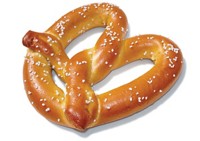Advertisement
Grab your lab coat. Let's get started
Welcome!
Welcome!
Create an account below to get 6 C&EN articles per month, receive newsletters and more - all free.
It seems this is your first time logging in online. Please enter the following information to continue.
As an ACS member you automatically get access to this site. All we need is few more details to create your reading experience.
Not you? Sign in with a different account.
Not you? Sign in with a different account.
ERROR 1
ERROR 1
ERROR 2
ERROR 2
ERROR 2
ERROR 2
ERROR 2
Password and Confirm password must match.
If you have an ACS member number, please enter it here so we can link this account to your membership. (optional)
ERROR 2
ACS values your privacy. By submitting your information, you are gaining access to C&EN and subscribing to our weekly newsletter. We use the information you provide to make your reading experience better, and we will never sell your data to third party members.
Education
Newscripts
The Science And Smells Of Thanksgiving
by Lauren K. Wolf
November 23, 2009
| A version of this story appeared in
Volume 87, Issue 47
Diane M. Bunce works hard to educate both the public and her students about chemistry. So hard, in fact, that she doesn't even take the holidays off. By the time this tasty Newscripts goes to press, Bunce, a professor at Catholic University of America, in Washington, D.C., will have given a PUBLIC LECTURE entitled "Thanksgiving Dinner and Chemistry—What's the Connection?"
"I have been doing this for a number of years as a way to bring chemistry into the lives and thoughts of all types of people," says Bunce, who is also associate editor of chemical education research for the Journal of Chemical Education. "Connecting chemistry and holidays is a nonstressful, fun way to show people that they can understand chemistry and all science."
According to Bunce, the dinnertime lecture, free of the tension of meal preparation with a dysfunctional family, will feature a Thanksgiving spread—including turkey, mashed potatoes, cranberry sauce, and other holiday staples—purchased at the local supermarket and cooked with the help of friends. For the outreach event, "we start by picking up something on the food table and taking it over to the demonstration table to investigate a chemistry concept involved," she says.

This year's lecture will feature a discussion of the science behind pop-up timers. A turkey timer "is an encased system that includes a depressed spring held in with a bit of solder," Bunce explains. The timer's solder melts at the same temperature at which a turkey is considered done—approximately 185 ºF. So when the bird's cooked, the spring is released, and the depressed plunger pops up.
"It's a pretty simple system," Bunce says. "Science doesn't have to be complicated to work!"
Thanks to food chemists in Germany, next year Bunce might also be able to include in her lecture a discussion of the key compounds responsible for the AROMA OF GRAVY.
Monika Christlbauer and Peter Schieberle of the Technical University of Munich recently applied aroma extract dilution analysis (AEDA) to a distillate isolated from a stewed beef-and-vegetable gravy, detecting 52 odor-active compounds (J. Agric. Food Chem. 2009, 57, 9114). The results of this type of study, Schieberle says, "give a blueprint of the aroma profile of a food" and "could be used, for example, to manufacture convenient foods with natural flavor."
AEDA was developed by his group 20 years ago, Schieberle says, and employs trained human "sniffers" in combination with gas chromatography/olfactometry (GC/O) to find the most odor-active compounds in food. During AEDA, scientists perform GC/O on serially diluted aliquots of an aroma distillate; the sniffers help assign something called an FD factor, defined as the highest number of dilutions at which an odorant can still be perceived.
On the basis of these FD factors, Schieberle and Christlbauer found that the aroma of beef-and-vegetable gravy is largely shaped by three volatile compounds: 3-(methylthio)propanal, 3-mercapto-2-methylpentan-1-ol, and (E,E)-2,4-decadienal, which smell like cooked potato, sulfury compounds, and deep-fried foods, respectively. In addition, the researchers, with the help of control samples of beef-only gravy, determined that the key odorants that give the beef-and-vegetable gravy its distinct aroma are not formed by a chemical reaction between its beef and vegetable components. In other words, the beef and vegetable odorants do not interact.
In the future, Schieberle and Christlbauer plan to characterize odorless aroma precursors in the gravy to elucidate compound-formation pathways during cooking. Most likely, the German researchers won't apply their molecular gastronomic approach to turkey gravy—that study will have to wait for a pro-turkey, Thanksgiving-loving food chemist in the U.S. or Canada.
Lauren K. Wolf wrote this week's column. Please send comments and suggestions to newscripts@acs.org.




Join the conversation
Contact the reporter
Submit a Letter to the Editor for publication
Engage with us on Twitter